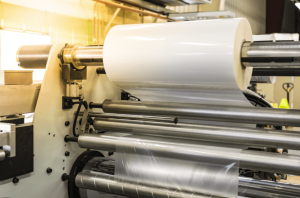Many kinds of print projects have a durable laminate introduced as a final step. Utilising a strong plastic film, laminates safeguard the ink and paper from tears, scuffs, moisture, and dirt. Besides offering resilience and improving longevity, they can also enhance the sheen, rigidity, and texture of print. All of this together is why laminating services are so popular.
Printed objects you’ll handle regularly or use in places where moisture, grease, or dirt might exist are good picks for lamination. Examples include game boards, marketing pieces, and reference sheets. If you’re intending to laminate any kind of print though, there are certain things you must keep in mind.
Flush-cut and sealed edges
 Lamination consists of bonding a sheet of plastic film to both sides of an object. A flush cut is when a plastic film gets cut flush with the edge of a paper substrate. What you get is a very clean edge but slightly less protection.
Lamination consists of bonding a sheet of plastic film to both sides of an object. A flush cut is when a plastic film gets cut flush with the edge of a paper substrate. What you get is a very clean edge but slightly less protection.
As for a sealed edge, this is where the bottom and top laminate sheets extend slightly past the edges of your printed piece on all sides. It enables the bottom and top laminate sheets to bond to each other around the whole perimeter. You therefore enclose the whole piece in plastic.
The flush cut method is aesthetically pleasing. However, it means the edge of the substrate does not have protection. It makes it susceptible to moisture, dirt, and similar contaminants. As such, if the main concern for print projects is to protect them, you’ll be better off with a sealed edge laminate. It has a more complete seal. Contact us if you need top tier laminating services.
Extending the edge of your laminate
For those working with waterproof books, you can extend the edge of your laminate to accommodate the plastic coil. The cover and pages of a book could be made waterproof by enclosing them with a sealed-edge laminate. Afterwards, you can bind the book with a coil of PVC plastic, which is waterproof too.
To guarantee moisture can’t touch the paper substrate, holes for the coil binding spine need to penetrate the laminate only; they can’t penetrate the underlying paper. This calls for a sealed-edge laminate along the spinal edge of your book to be further extended. It must go further than it is on the other three sides of your book.
Extending your laminate along the binding edge of your book supplies the extra area for the holes to insert the binding coil. Guarantee that the holes only penetrate the laminate rather than the paper substrate. By doing this, you preserve the integrity of the waterproof seal. If you plan this kind of application, choose expert laminating services.
Round the corners of thick laminates
Lastly, consider rounding the corners of thicker laminates for safer handling. As a laminate’s thickness goes up, it will naturally become more rigid and stiffer. Thus, a 90º corner can turn into a safety hazard. It is a good idea to round any sharp corners to avoid the chance of injuries. This is especially vital if young kids will handle the item.
Rounded corners are nearly always recommended with 10 mil laminates. Projects using a 5 mil laminate will normally depend on the base substrate’s thickness. This is to determine if square corners will be a danger. The 1.5 mil and 3 mil laminates typically have enough flexibility that your corners won’t need rounding.
Exceptional laminating services
At Foiling Services, we have become a leading authority on lamination. Because of the nature of this work, it’s much easier to get wrong than right. It can include issues like poor bonding, bubbles, and creases. Our team understands how problems can occur and strives to get things right every time.
So, if you need our laminating services, please let us know. We can provide some of the most comprehensive solutions in the UK, even adding laminate to things like composite panels and doors.
